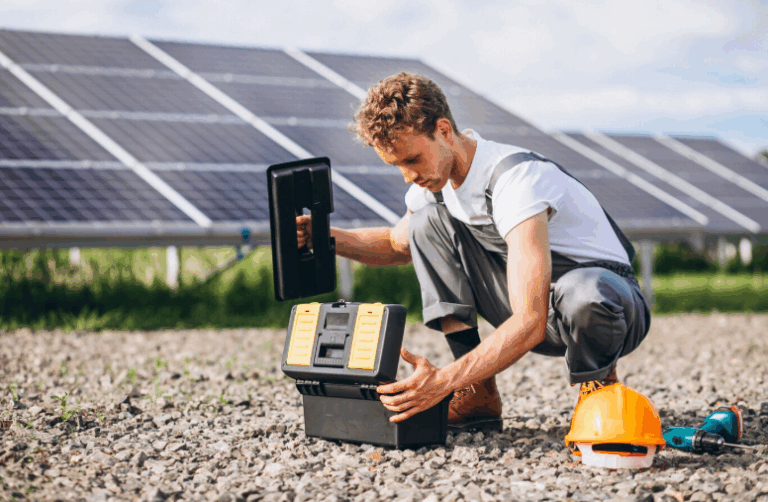Sustainability has evolved from being a buzzword to a core strategy for small businesses aiming to thrive in today’s competitive market. As these businesses look ahead, the fusion of sustainability and the circular economy offers a pathway for transformative change. With the circular economy projected to become a billion-dollar opportunity, it is critical for small businesses to rethink waste and embrace resource efficiency. By focusing on material reuse and designing products for longevity, they can reduce environmental impact while creating positive financial and social outcomes. This post delves into the top trends shaping the future for small businesses aiming for sustainable success.
Emerging Sustainability Trends for Small Businesses
In today’s market, sustainability isn’t just an option—it’s an expectation. For small businesses, this is more than about “going green.” It’s about responding to customer demands and creating value in ways that benefit both the environment and the bottom line.
The Growing Demand for Eco-Friendly Products
Consumers are more environmentally conscious than ever, and they’re actively seeking out brands that align with their values. This shift gives small businesses a unique chance to stand out by offering genuinely eco-friendly products. However, it’s not enough to just claim sustainability. Businesses need to be transparent and provide clear details to avoid the pitfalls of greenwashing.
Consider these points when shifting toward eco-friendly offerings:
- Transparency: Be upfront about what makes your product sustainable.
- Education: Help customers understand the benefits of choosing eco-friendly products.
- Innovation: Continuously explore ways to improve the sustainability of your offerings.
When businesses communicate their sustainability efforts clearly, they build stronger, more loyal relationships with customers.
Local Sourcing and Community Engagement
A key trend for small businesses is local sourcing, which helps reduce carbon footprints while supporting the local economy. By collaborating with local suppliers and getting involved in community initiatives, small businesses can create a strong identity tied to sustainability.
Here’s how small businesses can embrace this:
- Partner with Local Suppliers: This reduces transportation emissions and supports local economies.
- Host Sustainability Workshops: Educating the community fosters a culture of environmental consciousness.
- Join Local Environmental Projects: Actively contributing to local sustainability efforts strengthens your business’s presence and mission.
Being part of the local community not only improves brand loyalty but also highlights the business’s commitment to making a real, positive impact.
Innovation as a Catalyst for Sustainable Practices
Innovation plays a crucial role in driving sustainability forward. Small businesses can leverage new technologies to reinvent traditional operations into more sustainable models.
Technology for Sustainability
Digital tools such as IoT devices and cloud-based systems enable small businesses to monitor energy use, manage waste efficiently, and streamline resource allocation. These technologies make sustainability more achievable and cost-effective.
Design Thinking for Sustainability
Adopting design thinking empowers businesses to create products with a reduced environmental impact. Whether it’s using recycled materials or designing for product longevity, this approach ensures that sustainability is integrated into every stage of production.
By embracing innovation and rethinking product design, small businesses can lead the way in sustainable business practices.
Understanding the Circular Economy
The circular economy shifts the focus from a linear “take, make, waste” model to one where resources are continuously reused. For small businesses, this means that waste can become an opportunity, and products are designed for a second life.
Material Reutilization and Waste Management
Implementing strategies like inventorying resources, designing for longevity, and partnering with other businesses to exchange waste materials can significantly reduce both costs and environmental impact.
Businesses that incorporate circular principles not only contribute to a more sustainable future but also strengthen their long-term competitiveness.
Addressing Challenges in Sustainability
While the benefits of sustainability are clear, small businesses often face financial and resource limitations. Transitioning to eco-friendly practices can be costly upfront, and ongoing expenses related to compliance may strain budgets. However, these investments are crucial for long-term survival and growth.
Future Predictions: Sustainability and Circular Economy Trends
Looking ahead, we can expect consumer behavior and regulatory policies to continue driving sustainability. Consumers are demanding more transparency and are increasingly willing to pay a premium for eco-friendly options. Likewise, policies such as stricter environmental regulations and the push for sustainability reporting will further shape the landscape for small businesses.
Embracing sustainability and the circular economy is no longer just an option; it’s the path forward. For small businesses looking to integrate these principles, resources like Circularity Edge provide valuable insights and tools to help transition toward a more sustainable and profitable future.
Final Thoughts
Sustainability and circularity offer a wealth of opportunities for small businesses to drive growth while reducing their environmental impact. By focusing on transparency, innovation, and community engagement, businesses can navigate the challenges and unlock new potential in a greener economy.





